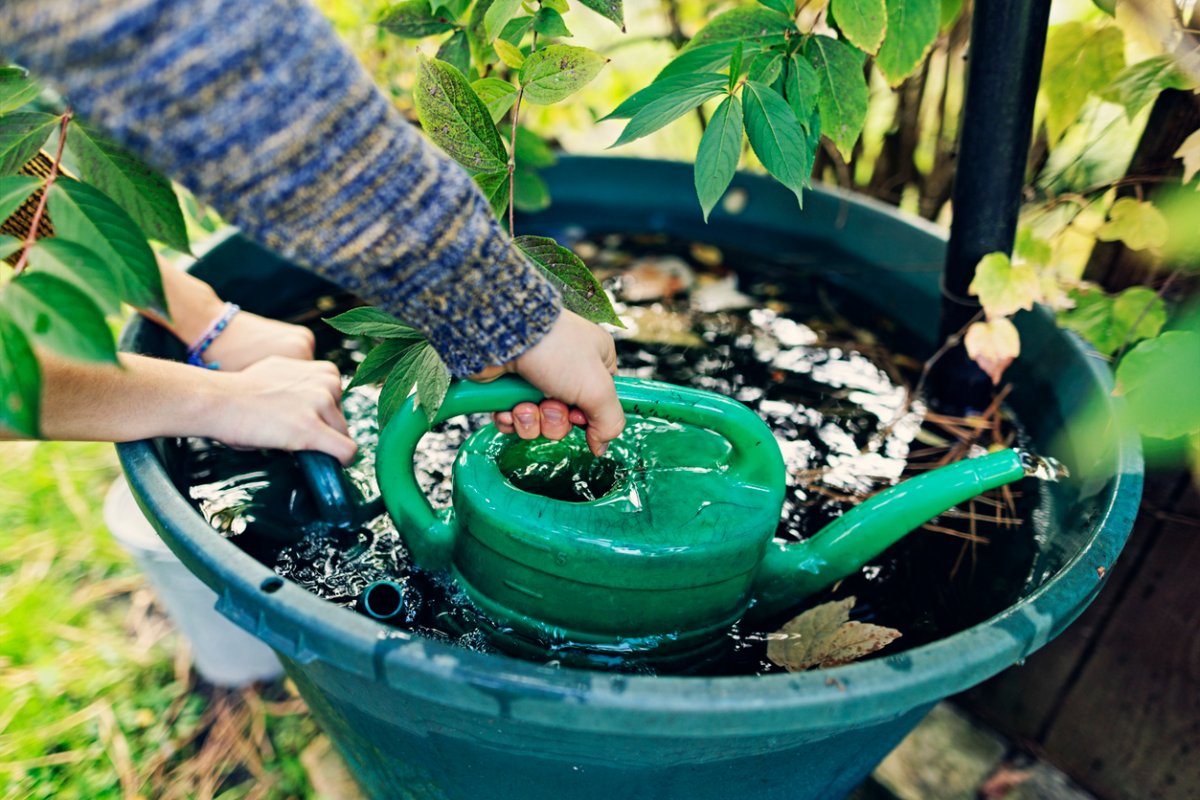

We may earn revenue from the products available on this page and participate in affiliate programs. Learn More ›
Increasing wildfires around the world and documented severe drought—even in unexpected spots like Hawaii and the Southeast—emphasize the need to take steps to lower water use. Collecting rainwater in home rain barrels offers a chance for anyone with a roof to do their part to prevent water runoff and reuse this valuable resource.
Yet, despite research in the past few decades, the debate over safety of rain barrel water for growing food at home remains mostly unsettled. It’s a complex topic, and one reason why there is no single answer is that there is no single circumstance under which gardeners can gather and use rainwater.
RELATED: 17 Rain Barrels That Make Water Conservation Stylish
Collecting and using rainwater in the garden makes sense.
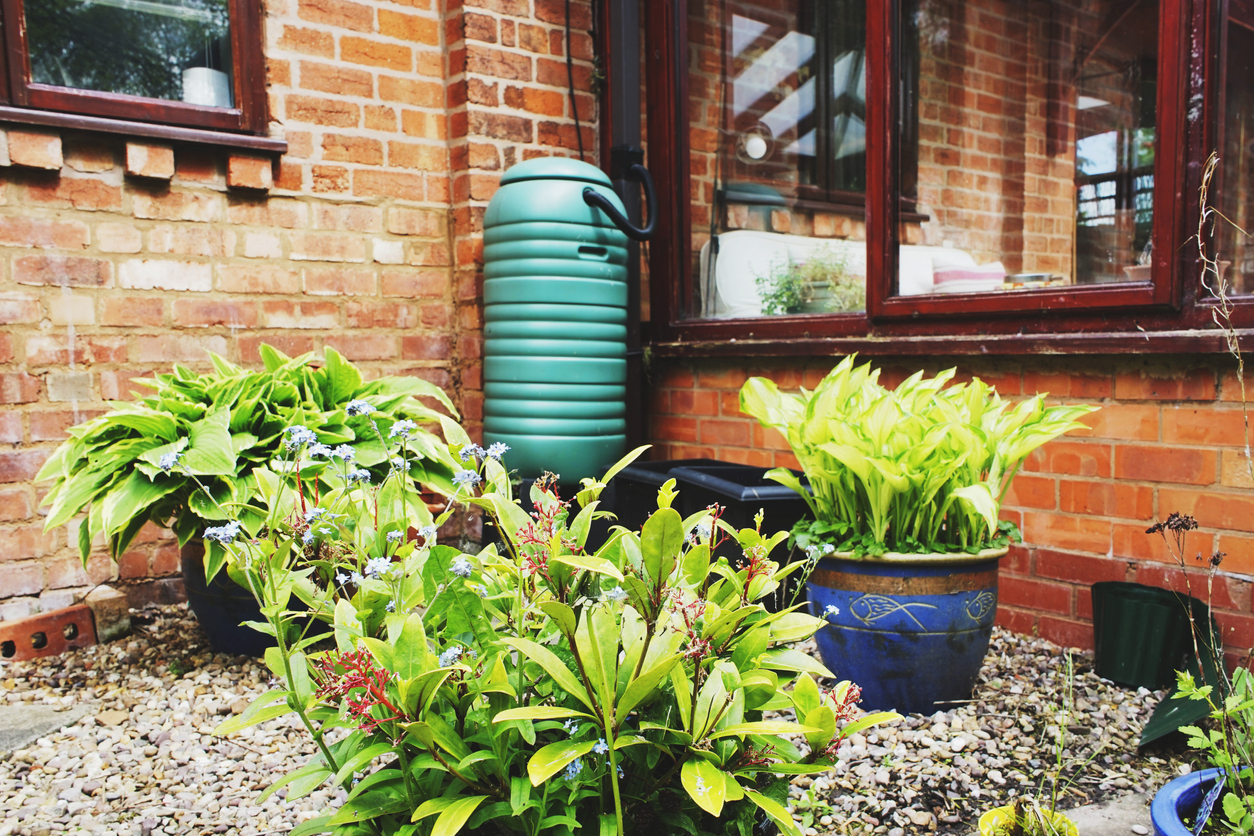
Especially where precipitation is scarce, a little rainwater-saving is better than none. A single inch of rainfall can generate 600 gallons of water from a 1,000-square-foot roof. Considering that 1 pound of tomatoes used 22 gallons of water to get from seedling to your salad, there is a lot you can do with even a little rain. And there’s no question that passive rain harvesting (directing roof water toward a tree, for example) and active harvesting in a rain barrel both help lessen waste. The question many gardeners have, though, is whether it is safe to irrigate their tomato plants with that gathered rainwater or use it just for flower beds.
You can’t drink rainwater, but whether to water vegetables is not as direct.
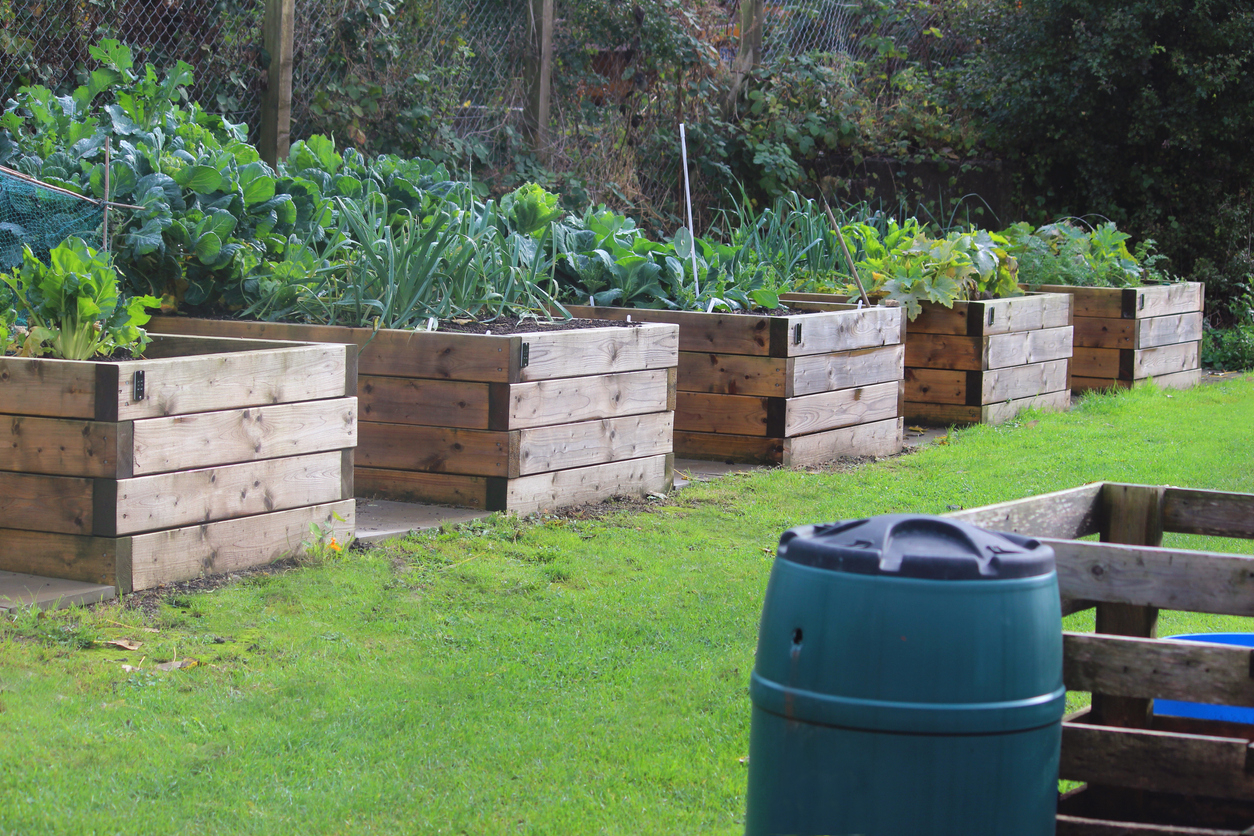
One aspect of rainwater is certain: it is not potable, or safe to drink, without frequent testing and treatment. That’s not practical for home rain barrel or cistern collection. There is no way to see or smell potential contaminants like lead or zinc, which come mostly from roofing materials, or even the possible pathogens like coliform or E. coli, which come from impurities (bird and squirrel poop, for instance) on the roof.
But irrigation water has more relaxed standards. Research from Rutgers University checked for these contaminants in rainwater and mostly found that the water fell outside drinking water standards and within irrigation standards (fewer than 9 percent of samples were too high in E.coli for irrigation). Other studies have looked at contaminants and found that some make it into leaves and even fruit. But the researchers used high levels of the contaminants for 11 weeks of watering from sprinklers. That means it probably is safe to use rainwater from many roof types as long as it goes directly into the soil, but not onto the plant leaves or fruit.
Some roof materials pose more risk of chemicals in harvested rainwater.
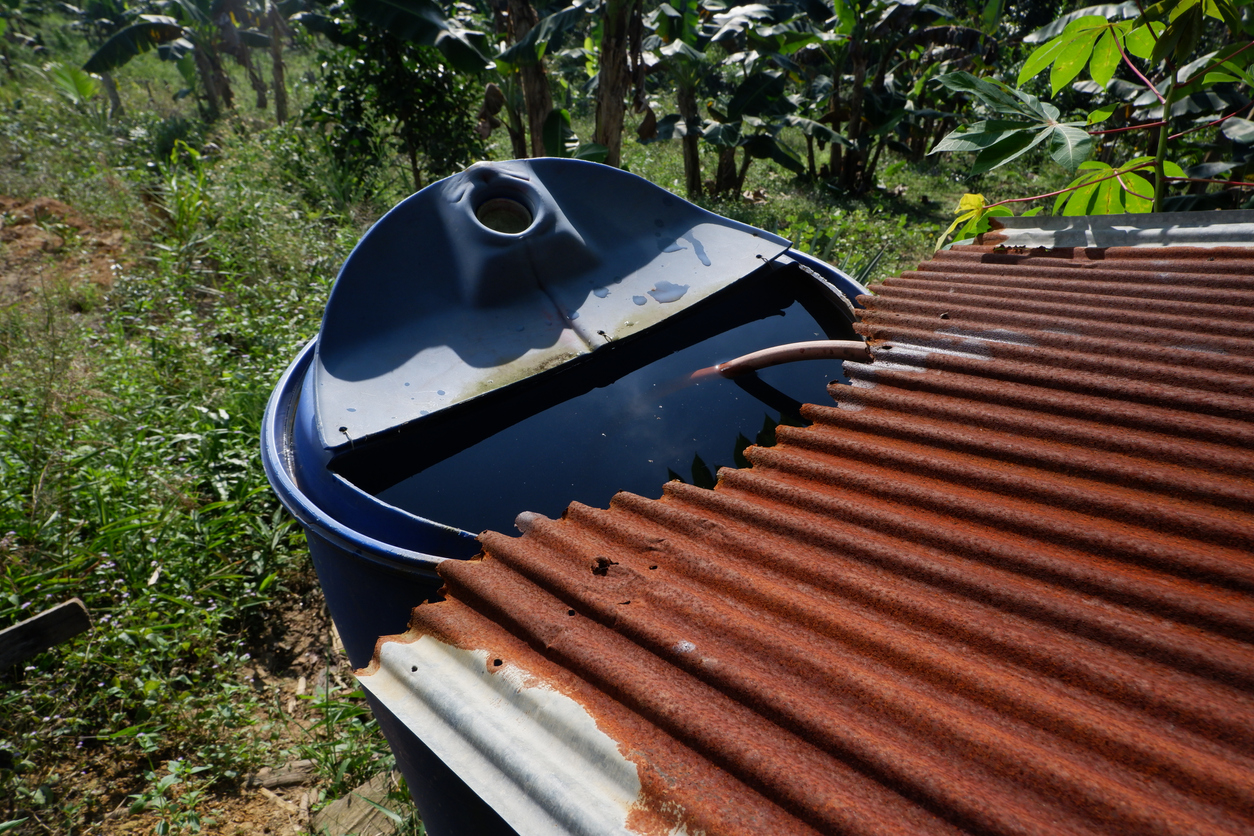
Other studies have checked toxicity levels from common roofing materials, though a roof consists of more than shingles alone; it has flashings, fasteners, and the gutters and downspouts that carry the water. Plus, conditions like slope play a part in leaching. In general, however, the following contaminants have been found in runoff from some roofing materials:
- Arsenic from PVC panel runoff
- Elevated copper and arsenic from treated wood shake panels
- Presence of copper or zinc in runoff from materials made of those metals
- Copper from asphalt shingles with algae-resistant copper formulas
- No elevated levels of chemicals or organic compounds from other asphalt shingles, TPO (without flame retardants), concrete tiles, or untreated wood shingles.
RELATED: How to Turn Snow Into Useful Water Reserves
There are simple ways to make rainwater safer.
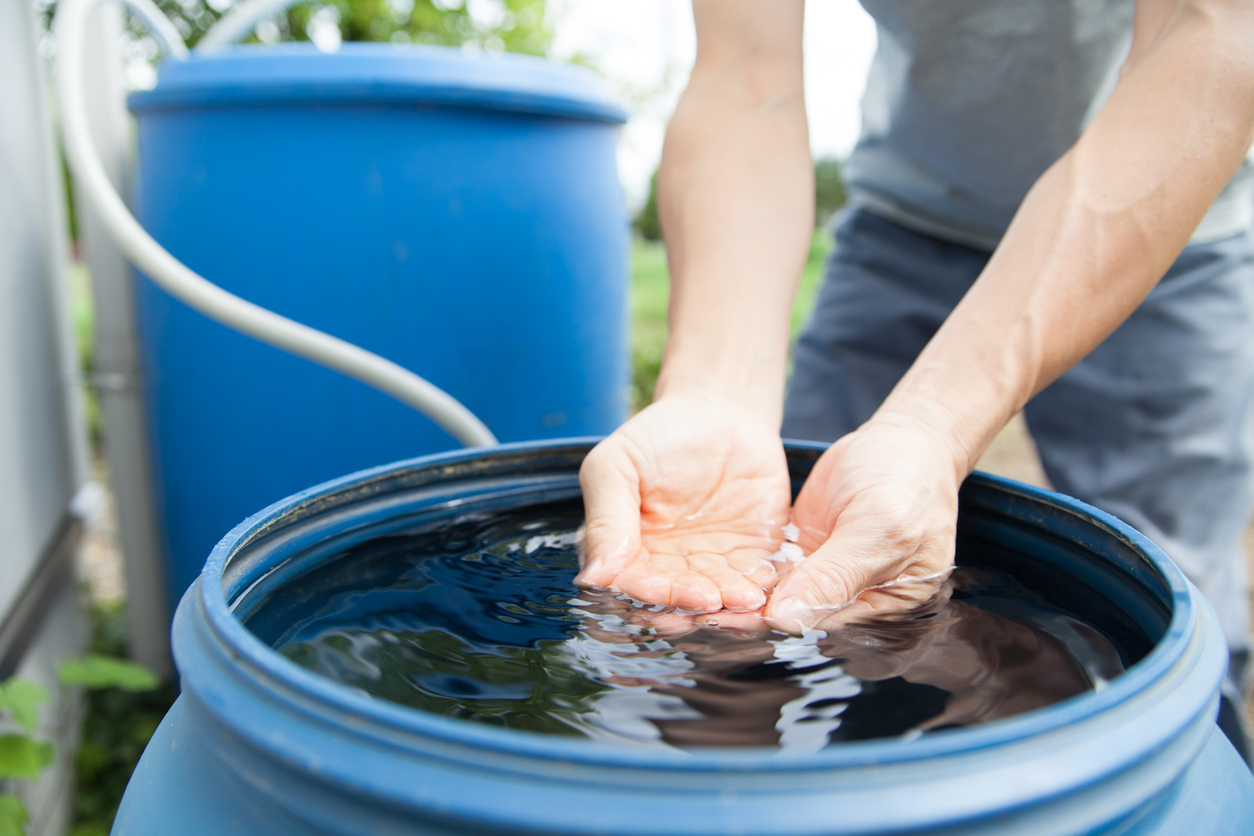
Although changing out your roofing material is an expensive proposition, there are other steps rain harvesters can take to help improve the safety of rain barrel water. Irrigate at the soil level and avoid applying or splashing rainwater on leaves or fruit. Drip irrigation is better for plants anyway, but even if using a water pail, hold it low and pour water underneath leaves or fruit. Water in the morning only, or right after harvesting.
Although adding bleach seems counterintuitive, per Rutgers adding just ⅛ teaspoon of 3 percent bleach per gallon of water once a month can help lower risk of pathogen exposure. That’s less than an ounce for a 55-gallon rain barrel. Wait 24 hours after adding the bleach before using the water on plants.
RELATED: Solved! What is a Rain Chain?
Regular rain barrel maintenance is essential.
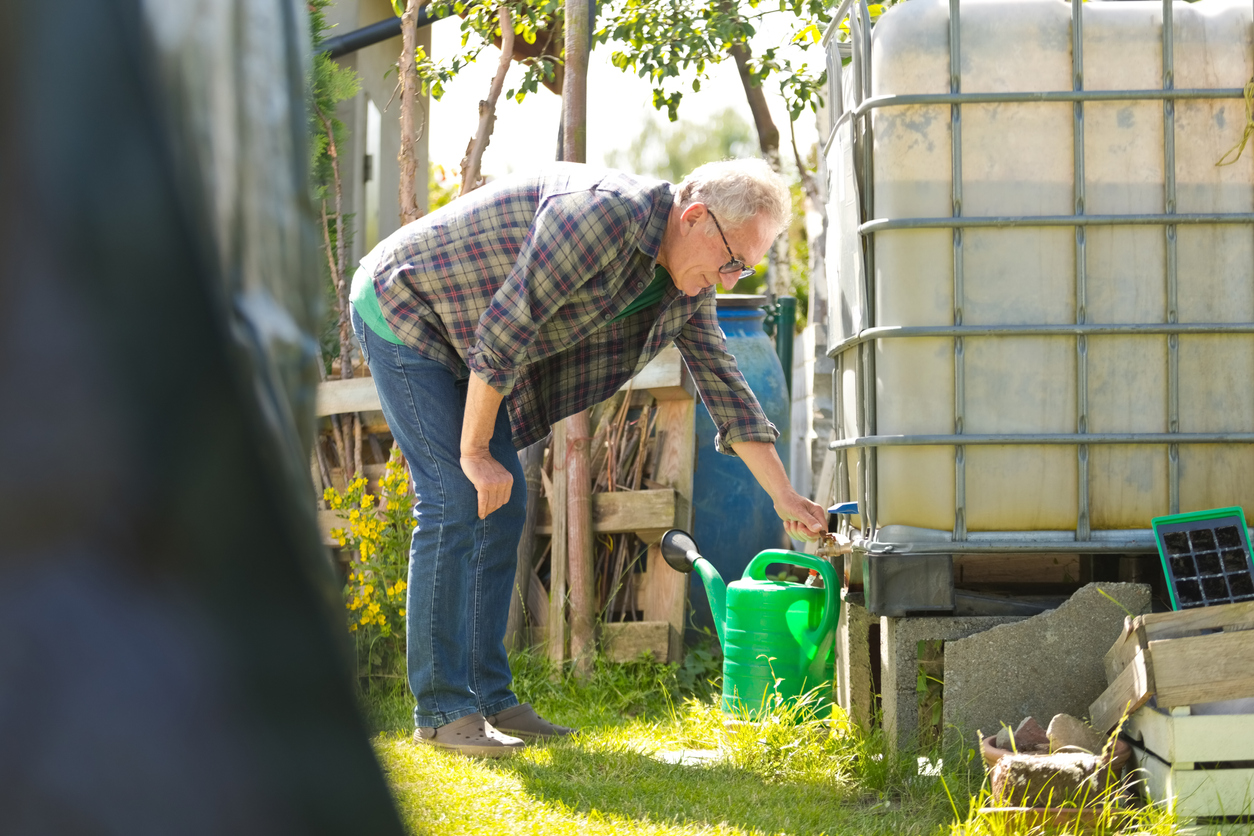
In addition to adding a light bleach to the water, keep a secure leaf screen cover on top of your rain barrel. This helps cut down on debris (or critters) entering the barrel. Each fall at the end of the growing season, completely drain the barrel (water a large ornamental tree if conditions are right by attaching a hose). Remove debris and scrub the inside of the barrel with water and detergent, using a spray nozzle to thoroughly rinse out sediment.
Once it’s empty, either store the rain barrel inside or place a tight cover over it. Water sitting inside rain barrels can freeze in winter, expanding and cracking the barrel. You can add a flexible extension to the roof’s downspout to direct winter moisture away from the house.
Finally, consider diverting the first flush of water from the roof each spring or after dry spells; the first flush carries the most debris and contaminants. This can be as simple as closing the barrel off until just after the first rain or adding a first flush diverter. It will redirect the initial downpour from each rain away from the barrel before opening to let cleaner water in for collection. Or you can use the first rainfall to water ornamentals rather than edibles.
RELATED: How to Build a Rain Garden—and Why You Should
Bottom line: Use rain barrel water with some caveats and caution.
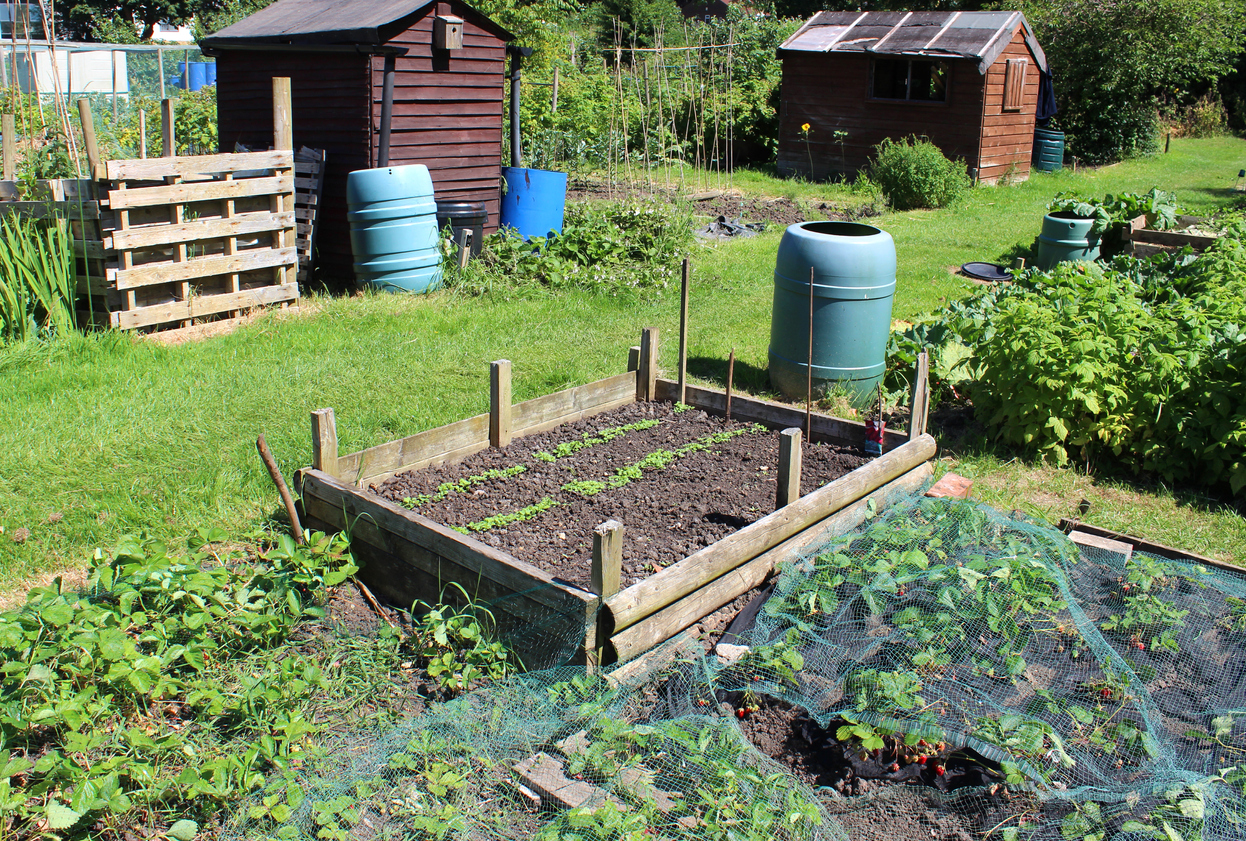
Though the bottom line on the debate over rain barrel water safety is still a little muddy, the best approach is a measured one. Feel safe to use the water with the following cautions or considerations:
- Avoid using rainwater on leafy greens, which grow low to the ground and on which the leaves represent the edible portion of the plant.
- If your roof material contains contaminants, reconsider rainwater use on edibles.
- Alternate use of rainwater with tap water, which still helps lessens costs and resource use, and can add some acid to the soil around plants growing in alkaline conditions.
- Follow tips above on rain barrel care and applying rainwater to edibles.
- Feel free to use rainwater on all ornamental plants.
Finally, check local laws and regulations concerning rainwater harvesting and use, and turn to local experts such as water authorities or extension offices/master gardeners. Your city might restrict collection or alternatively, encourage it with rebates and incentives.
